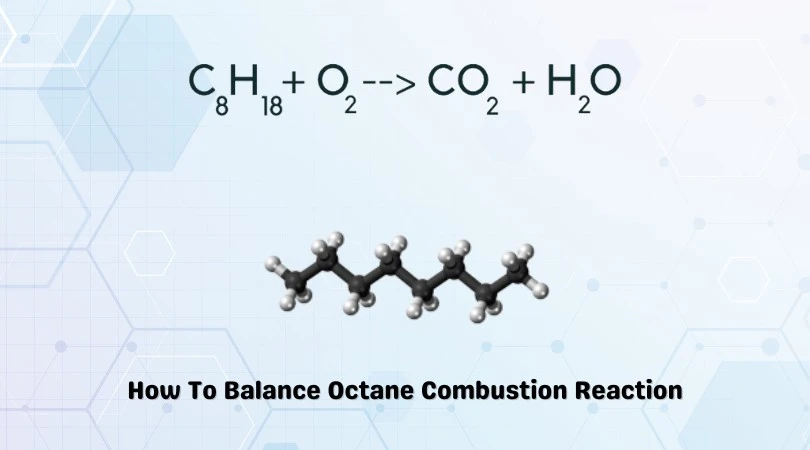The chemical formula C2H4 represents Ethylene. This molecule is also represented by H2C=CH2, clearly showing the alkene nature of the compound. An alkene is a hydrocarbon with a Carbon-Carbon double bond.
C2H4 exists as a colorless gas and is flammable. Its odor is described as faintly ‘sweet and musky’. Ethylene occurs naturally in petroleum natural gas. It inhibits growth in plants and promotes the ripening of fruits.
As an important industrial organic chemical, Ethylene is produced on a large scale by heating natural gas components. Ethylene is used in two ways. First, as a monomer, it helps in the synthesis of important polymer chains such as polyethylene.
Secondly, Ethylene acts as a starting material for the preparation of Ethanol and Styrene among others.
Ethylene has the following properties:
| Name of the molecule | Ethylene C2H4 |
| No. of valence electrons | (2 x 4) + (4 x 1) = 12 valence electrons |
| Hybridization of central atom | sp2 |
| Bond Angles | 121.3° |
| Molecular Geometry of C2H4 | Bent Molecular Geometry |
Contents
C2H4 Valence Electrons
Ethylene comprises two Carbon atoms with four Hydrogen atoms surrounding it.
Carbon is in group 4 of the periodic table with the electronic configuration [He] 2s22p2.
Therefore, the two Carbon atoms contribute 4 x 2 = 8 valence electrons
Hydrogen has an electronic configuration of 1s1. Therefore, the four Hydrogen atoms contribute 1 x 4 = 4 valence electrons.
Therefore, the total number of valence electrons in Ethylene (C2H4):
8[C] + 4[H] = 12 Valence Electrons
C2H4 Lewis Structure
Hydrogen is the least electronegative element here. However, in Hydrocarbons, we always place the Carbon atoms in the center as shown in the figure.

We have 12 available valence electrons. Start by forming covalent bonds between the Carbon and Hydrogen atoms. We place two valence electrons between each atom as shown in the figure. These are covalent bonds.

The remaining two valence electrons are then placed onto one of the Carbon atoms as shown in the figure.

The above figure shows all 12 valence electrons being used up. Are we done here? Well, a stable Lewis structure requires all its constituent atoms to be filled up in accordance with the octet rule. The Hydrogen atoms complete their outer shells with two electrons. One of the Carbon atoms has its outermost shell filled with 8 valence electrons fulfilling its octet.
However, as can be seen above, the Carbon atom on the left only has 6 valence electrons in its grasp. We need to overcome this to obtain a stable Lewis structure for C2H4.
By shifting the two valence electrons underneath the Carbon atom on the right as shown in the figure, we can get a stable Lewis structure in accordance with the octet rule.


It can be seen that all the atoms in the above figure fulfill their octet requirements. Therefore, the final C2H4 Lewis structure is given below.

C2H4 Hybridization
An easy way to look at the Hybridization of Ethylene is to consider the electron domains on each Carbon atom. Since the double bond is considered a single domain, there will be three domains accounting for the covalent bonds with Hydrogen.
This tells us that the hybridization on each Carbon atom is sp2. However, let’s analyze this in more detail.
During the hybridization process, the electronic configuration of the Carbon atom changes from its ground state (1s2 2s2 2p1 2p1) to an excited state (1s2 2s1 2px12py1 2pz1) leading to 4 unpaired electrons.
Only the 2s, 2px, and 2py take part in hybridization. The 2pz orbital remains unchanged. This gives rise to three sp2 hybridized orbitals. There is an overlapping of the two sp2 orbitals from one Carbon atom over another. This leads to an sp2– sp2 sigma bond.

Therefore, the remaining two Carbon sp2 orbitals combine with unpaired Hydrogen atoms containing unpaired electrons. A pi bond is formed between the two Carbon atoms by their unhybridized 2pz orbital.
C2H4 Bond Angles
According to the VSEPR theory, the Hydrogen atoms on both Carbon atoms will repel each other giving rise to a bond angle of 121.3°.

C2H4 Molecular Geometry
As it can be seen from the Lewis structure above, each Carbon atom is bonded to two Hydrogen atoms. These Hydrogen atoms repel each other on the same plane according to the VSEPR theory.
Using steric numbers or the A-X-N method, we can determine the molecular structure for C2H4.
‘A’ represents the central atom, which is one, considering one-half of the molecule. ‘X’ represents the number of atoms bonded to the central atom. In this case, our Carbon atoms are bonded to each other and the two Hydrogen atoms.
Therefore, X =3.
‘N’ represents the number of lone pairs attached to the central atom. In this case, N = 0.

Therefore, that would give us AX3 for the C2H4 molecule. We can ignore ‘N’ since there are no lone pairs. From the A-X-N, table below, we can determine the molecular geometry.
| Formula | Shape | Bond Angle (Theoretical) |
| AX2 | Linear | 180 |
| AX3 | Trigonal Planar | 120 |
| AX4 | Tetrahedral | 109.5 |
| AX5 | Trigonal Bipyrimidal | 120, 90 |
| AX6 | Octahedral | 90 |
| AX2N | Bent | 120 |
| AX2N2 | Bent | 109.5 |
Therefore, the molecular geometry of C2H4 is Trigonal Planar.
Concluding Remarks
Let’s quickly summarize the salient features of C2H4
- C2H4 consists of two Carbon atoms surrounded by two Hydrogen atoms on each end.
- In its most stable state, the two Carbon atoms act as the central atoms in the structure. They form double bonds with each other and covalent bonds with the Hydrogen atoms.
- The hybridization of the Carbon atoms in C2H4 is given by sp2.
- C2H4 has a Trigonal Planar molecular structure with bond angles of 121.3°.



